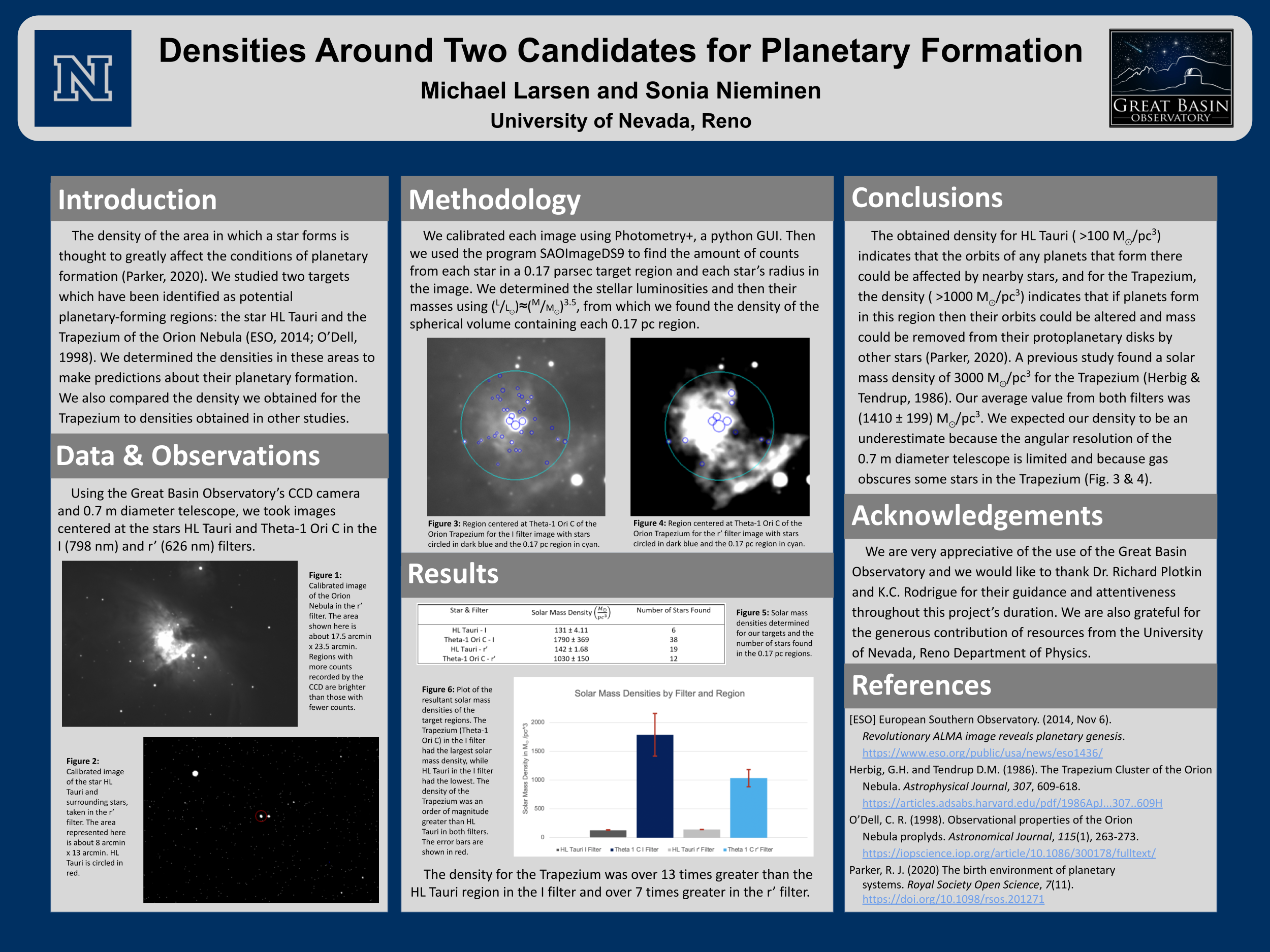
In the fall of 2021, University of Nevada, Reno students used the GBO’s 0.7m diameter telescope to study several potential planetary-forming regions. They looked at densities in the star HL Tauri and the Trapezium of the Orion Nebula. Density is a predictor of planetary formation because in the early phases of the collapse of a protostar, a disc of material forms around the star almost like the rings of Saturn. It is within these rings of material that the first stages of planetary formation occur. The higher the density of material in the rings, the better we can predict what kind of planet will form. Being in a region of higher density also increases the chances of an interaction with other stars.
In the images the UNR students took with the GBO, they found that the density for the Trapezium region of the Orion Nebula was 7 - 13 times greater than the HL Tauri region. This is significant because a region with this high of density can affect the orbit of the planets within it. Or even risk having mass removed from protoplantery discs from other stars.
